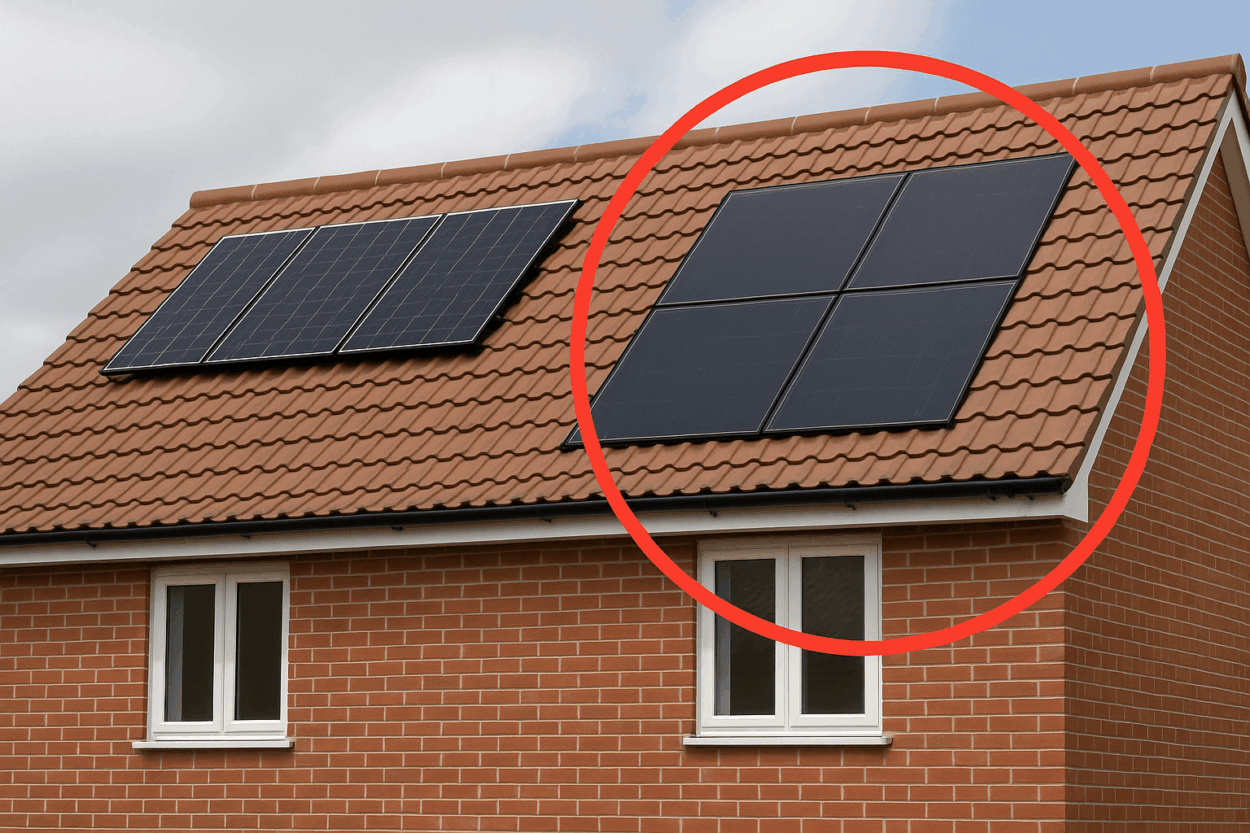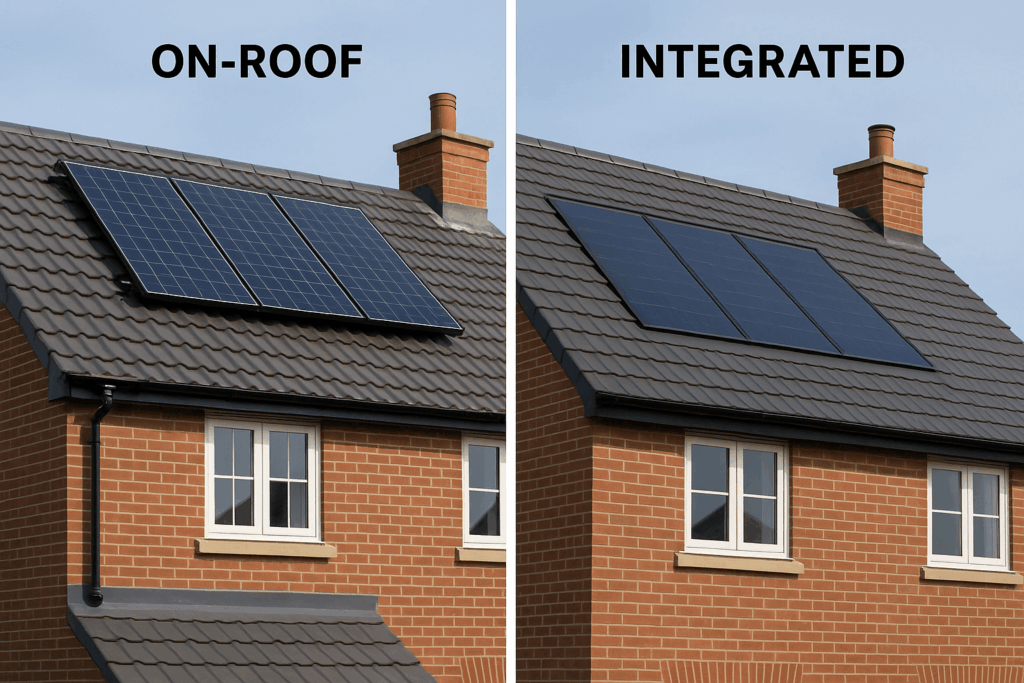0203 193 8888
0203 193 8888

Here at The Solar Co., we have extensive experience installing integrated solar panels, alongside more traditional on-roof setups in the South-East. We’ve put together a comprehensive guide that addresses some of the questions we most often receive from customers. This will help you decide if they are right for you.
Integrated solar panels, also known as in-roof solar panels, seamlessly blend into a building’s roof. Unlike conventional solar panels that sit on top of an existing roof, integrated panels become part of the roof itself, providing a more aesthetically pleasing finish.
In this guide, we’ll cover the following:
Advantages:
✅ More aesthetically pleasing
✅ Likely to add even more value to your property
✅ Prevents birds nesting behind panels
✅ Saves money on meshing
✅ Will save money on tiles if done at build stage
Disadvantages:
❌ Increased costs to install retrospectively
❌ Impact on efficiency during hotter periods
❌ Designated Flashing Zones: Integrated panels require flashing zones around the system’s border, limiting usable space and often resulting in fewer panels compared to on-roof systems.
❌ Rigid Layout Constraints: Fixed mounting trays must align perfectly, preventing panel staggering or orientation changes, which limits layout flexibility.
The cost of integrated Solar Panels will vary depending on whether they are added to a new build or retrofitted into an existing roof.
Retrofitting will naturally involve removing a large percentage of the existing tiles and replacing them with the in-roof solar panels. This will incur a larger cost due to the added manual labour and extra expense associated with disposing of the removed tiles. Where the roof is already tiled, integrated solar panels generally cost an additional £150 – £250 per panel compared to on-roof systems.
For new builds, they are integrated into the roof at the build stage. There are additional costs to integrate them, around £100-£150 per panel versus a traditional set-up, but there is something important to bear in mind.
Each solar panel typically covers around 2m² meaning that for every panel installed there is a relative saving on the roofing cost of that area, i.e. you will need fewer tiles and labour.
Given that installed slate tiles cost approximately £160 to £275 per m² and concrete tiles around £60 to £80 per m², the avoided expense of tiling 2 m² per panel can significantly reduce the overall cost difference, making integrated solar a cost-effective option.
Your roofer might not be inclined to tell you this!
Top-level, integrating your solar panels may reduce the efficiency of the system by 2-5%.
Let us explain why it’s difficult to provide a more precise number.
All solar panels lose efficiency when they are above a certain temperature, around 25c.
There are not many days in the UK when the temperature exceeds 25c, however note this is the temperature of the panel, not the air.
With Integrated solar panels sitting flush with the room, there is slightly reduced airflow to cool the panels. This reduced air could increase the temperature of the panel itself by 5c to 10c.
An individual panel may produce around 0.5% less power per Celsius above 25c, so on those days, the panels are likely to be 5% less efficient than a traditional on-roof solution.
On a hot August day, if you exported 30kWh with a traditional on-roof solution, you would export 28.5kWh with an integrated set up. At an export rate of 15p per kWh, that would be £4.27 rather than £4.50. That is a 23p difference.
There will only be so many days of the year when this becomes relevant, owing to the seasonal climate of the UK.
The loss of efficiency should be balanced against the additional value it adds to the property.
This graphic gives you a good example of how the finish can differ:

Opting for integrated solar panels versus a traditional on-roof solution is likely to add even more value to your house.
Reduced electricity bills from a system already in place is very appealing to many prospective buyers. Any installation therefore is likely to increase the value of your property.
However, integrated panels provide a very nice aesthetically pleasing finish, which is likely to be preferred by the majority, and therefore valued even more.
Numerous studies show properties with efficiency upgrades (such as solar panels) sell for as much as 15% more. This could be caveated that someone who has invested in solar panels in their home are likely to have made other investments to command a higher selling price, but there is plenty of evidence that it’s a key part in selling a home for a bigger price, and faster.
There is a good chance that the extra cost of integrating the panels, and then the slight drop in efficiency is completely offset by the extra value it adds to the house because of the better finish.
Get them if:
You want your solar panels to look seamless and are happy to compromise on a small amount of efficiency during some months and have the budget to integrate them.
Don’t get them if:
You think a traditional on-roof installation looks fine, want to maximise the power you generate, want as many panels as possible and want to keep costs as low as possible.
If you’re based in the South East, then contact The Solar Co and get a quote.
We install both on-roof and integrated solutions and can help advise on what is right for you.
The Solar Co designs the most optimal systems for each customer. For each system we design, we do the following
Give us a call, WhatsApp or an email and let us help you.
Back to Blog